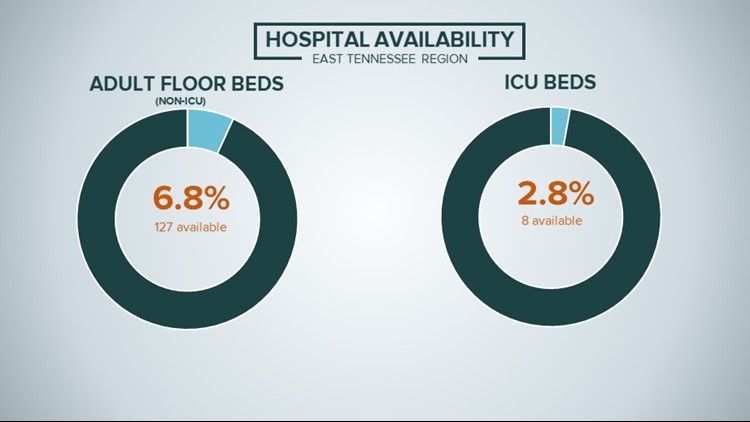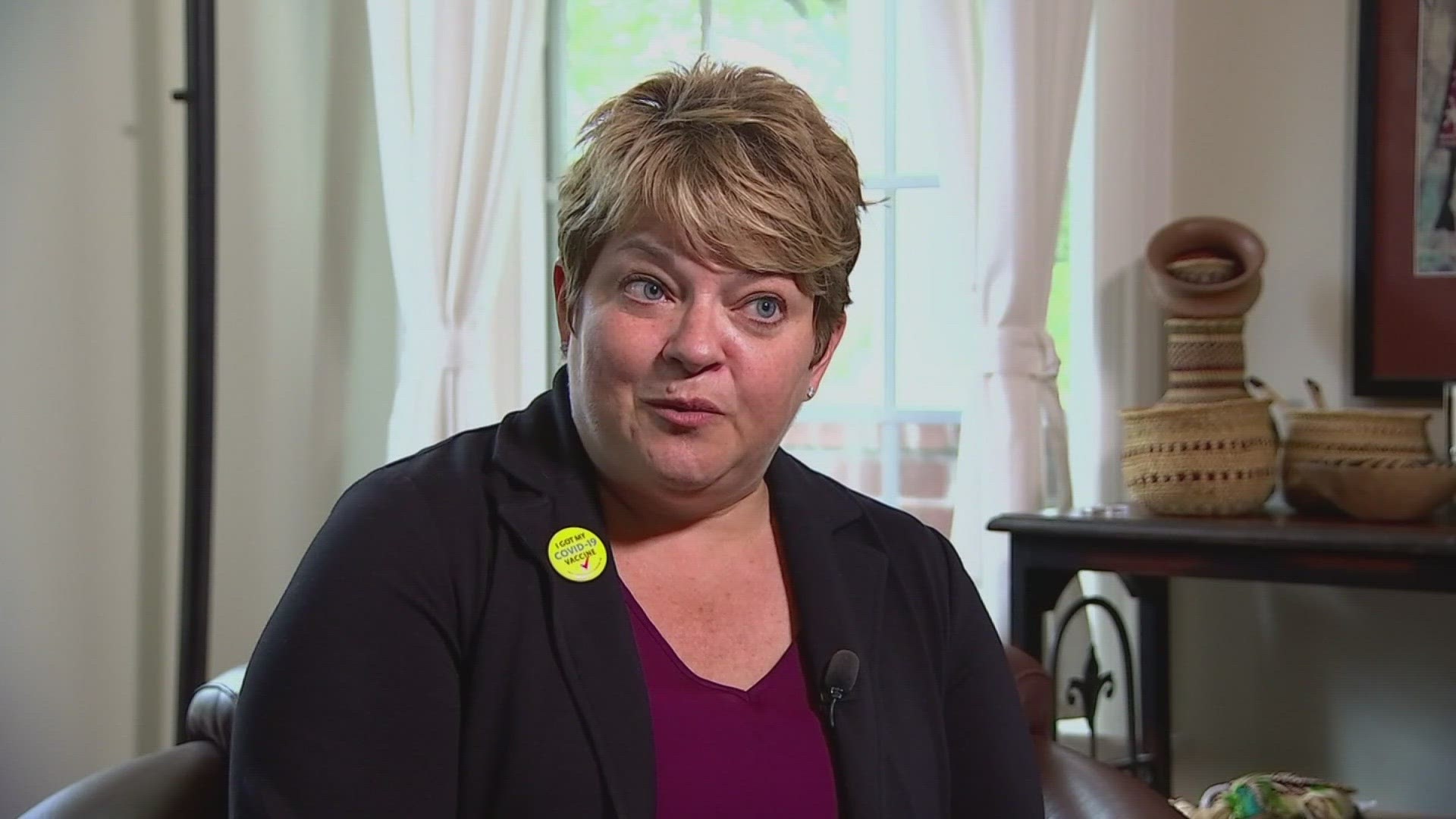KNOXVILLE, Tenn. — The COVID-19 situation in East Tennessee is growing increasingly dire as concurrent hospitalizations continue to hit new highs day-after-day, and the Knox County Health Department is raising its final red flag for the first time because East Tennessee hospital ICUs are nearly full.
According to Wednesday's weekly regional metrics from the Knox County Health Department, ICU capacity across all 16 East Tennessee counties is sitting just above 97% -- and there are only 8 ICU beds open in the entire region out of the 284 available.
To make matters worse, doctors said new cases, hospitalizations and deaths are only expected to grow due to the Thanksgiving holiday. The current large number of cases being seen are people who contracted the virus before the holiday, Dr. James Shamiyeh with UT Medical Center said.
When asked what could be done to mitigate the Thanksgiving surge, the answer was blunt: It's too late since the infections have already occurred, and all that can be done now is to work together to prevent even more future surges through simply following the same five core actions of social distancing, wearing masks and hand hygiene until immunizations can protect people and effectively limit the spread.
“This bell cannot be unrung. It’s already happened. We cannot mitigate the past at all," medical data analyst Keith Britt said during the Wednesday Knox County Board of Health meeting. "I don't think there's any way to prevent the surge that's coming. I would just encourage the board to find ways to blunt the effects of it."
Covenant Health's and Tennova's Chief Medical Officers spoke to the board Wednesday to discuss the decision to move regional hospital metrics to "red." They said while the COVID-19 trends they are seeing are highly concerning and it's straining the health system, people should not avoid going to the hospital when they need medical help.
"If you are having symptoms, it’s still critically important and safe to come to the hospital. We can and are keeping our patients safe,” Covenant CMO Dr. Mark Brown said.
If ICUs reach capacity, hospitals will then have to care for COVID-19 patients by moving them to open beds in other areas of the hospital -- limiting the total number of hospital beds available and creating the need to halt elective procedures once again. If there are no beds available, then the designated overflow sites will need to be opened and utilized.
Because of the limited ICU bed availability, record number of current hospitalizations across the region, and the high likelihood of an incoming surge of new patients infected over the Thanksgiving holiday, KCHD has placed its health care capability metric in the "red" based on current and forecasted surge capacity.
This is the first time the health care capability benchmark has been in the red, and the first time all metrics tracked by the county are red at the same time since KCHD began tracking them.
As of Wednesday, Knox County alone had 170 current hospitalizations -- the highest it's ever been. This does not include people who reside outside of Knox County transferred to hospitals here for care.
The most recent regional benchmarks as of December 1 showed there were 423 positive COVID-19 impatient at regional hospitals, with 90 of them in the ICU and 41 on ventilators. There were an additional 34 patients with pending lab results, with 6 of those in the ICU and 3 on ventilators.
At least 69 people died from COVID-19 in Knox County during the month of November -- nearly double the previous monthly high of 35 set back in July. It's likely the actual number of deaths that occurred in November will continue to grow as pending death reports are certified.
East Tennessee Regional Hospitals are currently at 83% total utilization for all hospital beds, which includes areas at hospitals not able to care for COVID-19 patients such as labor and delivery wards and behavioral health beds. It also includes pediatric beds that need to remain available for pediatric-specific needs.
Excluding pediatric beds, there are only 127 (roughly 7%) total adult non-ICU hospital beds remaining.
If Alternate Care Site and Medical Surge Task Force beds need to be implemented to manage hospital overflow, KCHD data shows an additional 543 ICU beds and 374 ventilators would be made available at designated overflow sites in the region. KCHD shows there would be 4,389 total hospital beds made available in that event.



